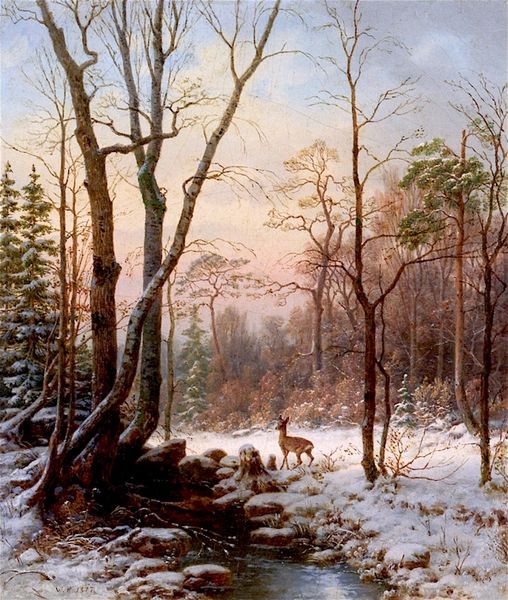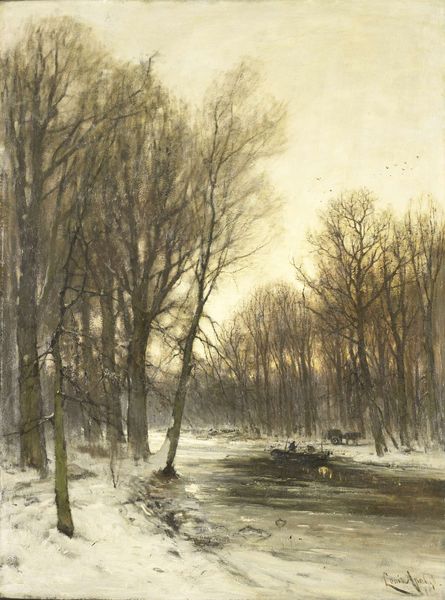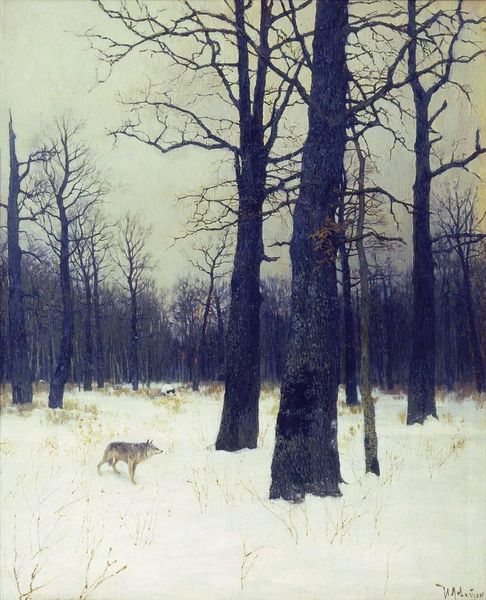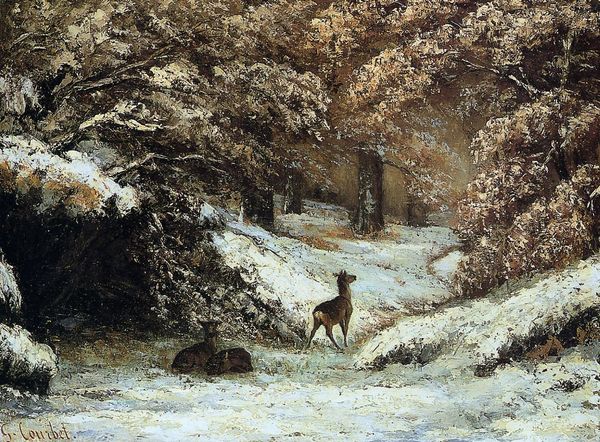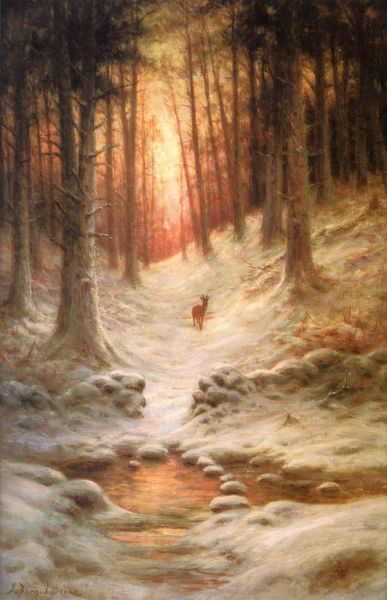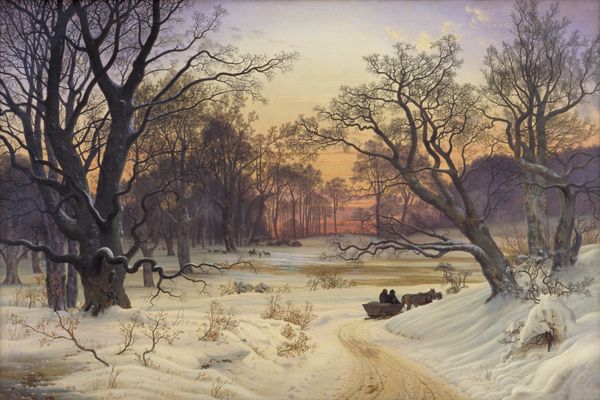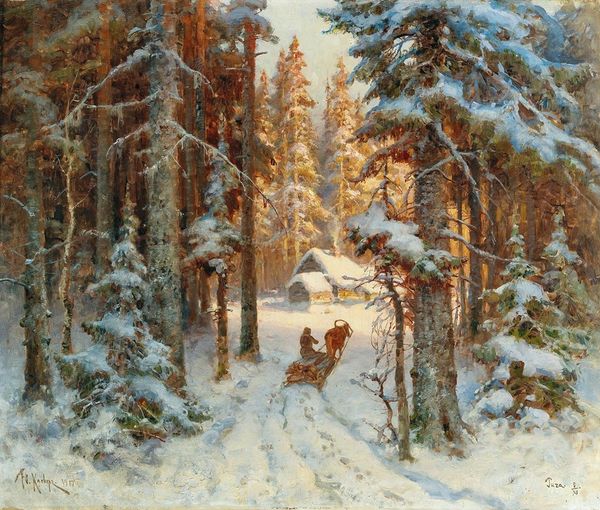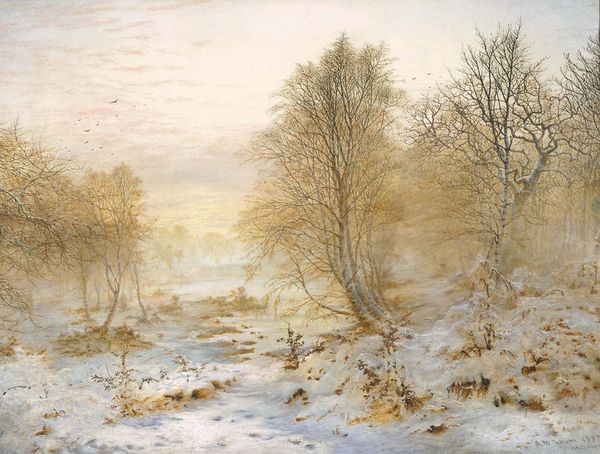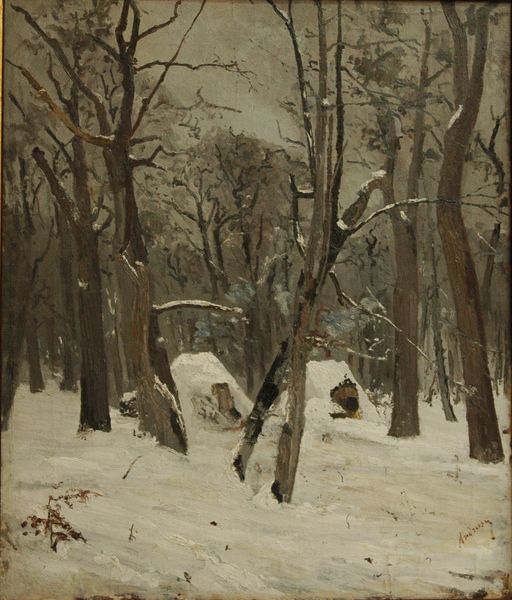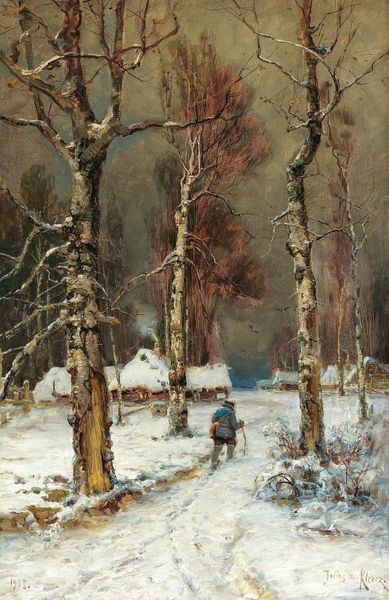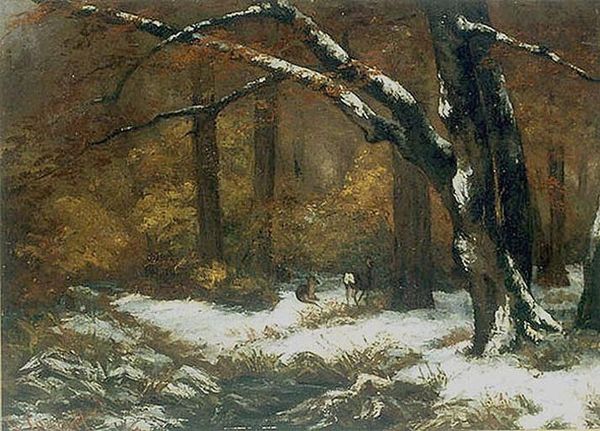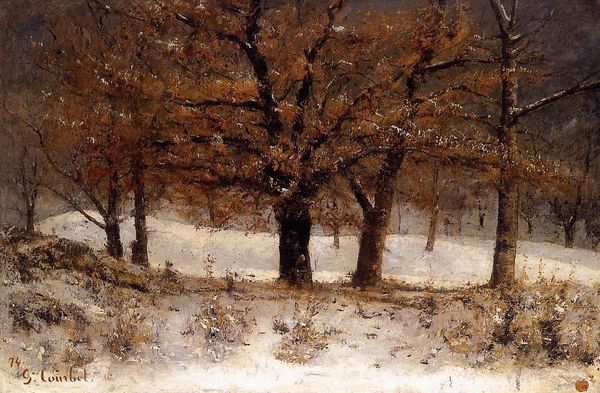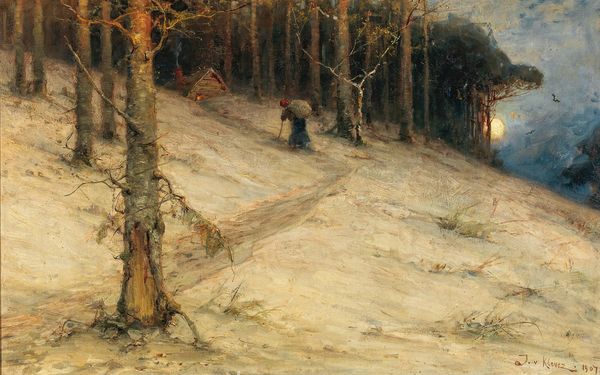
painting, oil-paint
#
16_19th-century
#
painting
#
oil-paint
#
landscape
#
figuration
#
romanticism
#
genre-painting
#
realism
Copyright: Public domain
Editor: This is “Winter Landscape” an oil painting by Efim Volkov. I don't have the exact year, but it's listed as 19th century. I find the wintry scene very atmospheric – it really gives a sense of quiet solitude, what strikes you most about this piece? Curator: Initially, the composition compels. Observe how Volkov organizes the spatial plane. The skeletal trees in the foreground establish a vertical rhythm, framing the subtle horizontal recession into the hazy background. How does this organization of space influence your perception? Editor: I see that it creates depth, definitely drawing the eye into the distance, but it feels almost... deliberate, like he’s using the trees to guide us. Curator: Precisely. It’s not merely representational; it's structural. The palette, too, merits close attention. The subdued range of browns, grays, and whites aren’t just mimicking nature. They function as tonal signifiers that generate an aura of serenity and melancholy, a quiet contemplation, isn't it? Editor: I see what you mean! So the colors contribute as much as the lines and shapes do? I hadn’t thought of the palette as an active part of the composition, more like just depicting reality. Curator: Precisely, every visual component works as a language to create the art. This is the essence of pictorial semiotics; where elements speak. Volkov's painting, therefore, isn't only landscape, it’s a carefully structured arrangement that speaks of emotion via form. Editor: That's fascinating! I'm definitely going to pay more attention to color and composition as languages in paintings from now on. Thanks. Curator: My pleasure. Recognizing those pictorial cues enriches our aesthetic experience.
Comments
No comments
Be the first to comment and join the conversation on the ultimate creative platform.
